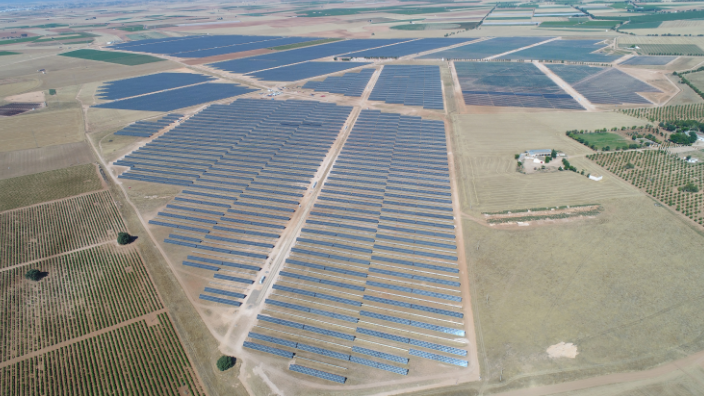- Start of production of solar PV plants in Chiprana, near Zaragoza, and Alcázar de San Juan, near Ciudad Real, lifts Galp’s solar capacity in production to 1.2 GW
- The combined output of the four plants, with a total capacity of 200 MW, will avoid the emission of around 54 kton of CO2 to the atmosphere
PVTIME – Galp has kicked-off production at four new solar photovoltaic (PV) plants in Spain, one near Zaragoza and three in the Ciudad Real area, thus becoming one of the very few Iberian players with more than 1GWp of installed solar power capacity in operation.

The Logro PV plant, located in Chiprana (Aragón), has an installed capacity of 50MW and will have an estimated annual energy production of 90,855 MWh, enough to supply 35,000 homes with clean energy. The Alcázar I, II and III PV plants, located in Alcázar de San Juan (Ciudad Real), have a global installed capacity of 150MW and are estimated to supply a yearly 295,345 MWh, equivalent to cover the energy needs of 105,000 households.
The start of operations of Logro and Alcázar confirm our pledge to continue driving the transition to a more sustainable energy system, increasing the energy security of the Iberian Peninsula and lowering electricity costs for all,” said Georgios Papadimitriou, Galp’s COO for Renewables and New Businesses. “We are fulfilling the commitments to our shareholders as well as to society,” he added.
Galp estimates that the combined production of the four plants will avoid the emission into the atmosphere of about 54 kton of CO2. This is another step forward in Galp’s commitment to the energy transition and the search for alternatives that allow it to advance in the decarbonisation process.
Galp is currently one of the top producers of solar photovoltaic energy on the Iberian Peninsula, with an installed capacity of 1.2 GW in production, integrated into Galp’s renewable energy portfolio of 9.6 GW, including projects under development in Spain, Brazil, and Portugal. Galp’s goal is to increase its renewable energy production capacity to 4 GW by 2025 and to 12 GW by 2030.











